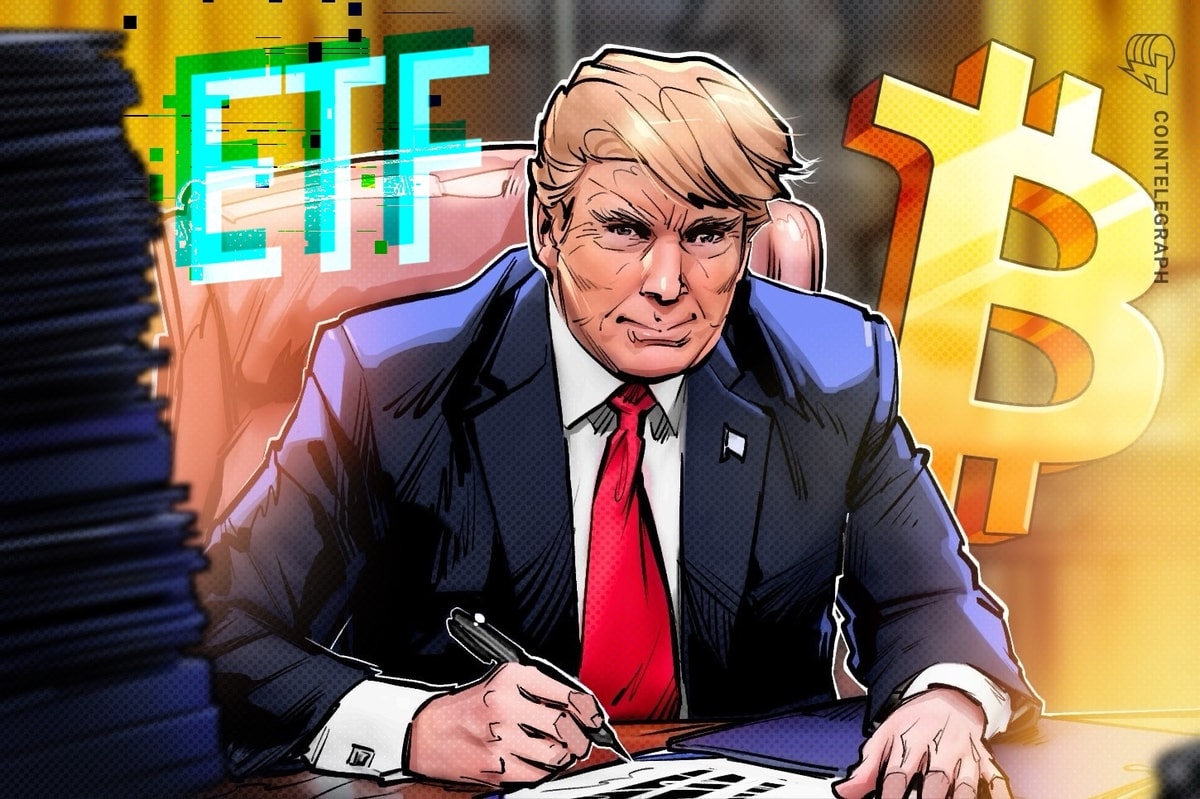What is the SEC’s 2025 guidance?
The US Securities and Exchange Commission’s Division of Corporation Finance (CorpFin) released a comprehensive statement on April 10, 2025, outlining what companies need to disclose when offering or registering crypto asset securities.
This statement (the SEC’s 2025 guidance) aims to reduce ambiguity regarding classifications of crypto tokens under US securities laws. It updates how the Howey test is used and introduces a clearer system to tell the difference between security tokens and non-security tokens.
The Howey test is a decades-old framework used to determine whether a crypto asset qualifies as a security. Four criteria that the test applies are investment of money, an expectation of profit, a common enterprise and reliance on the efforts of others.
A major highlight of the SEC 2025 guidance is the “reasonable expectation of profit” criterion. The SEC emphasizes that if token buyers expect profits based primarily on the efforts of a centralized team or promoter, the token is likely a security. The SEC noted, “Where entrepreneurial efforts drive price appreciation, tokenholders effectively invest in a common enterprise.”
The guidance also introduces a three-pronged framework:
- Initial sale context: Whether the token was marketed as an investment
- Ongoing use: If the token provides functional utility on a decentralized network
- Issuer influence: Degree of control retained by the founding team or foundation.
Tokens with no expectation of profit, like Ether (ETH) after the Merge, or stablecoins backed by real, transparent reserves, usually don’t count as securities.
But tokens tied to governance rights or revenue sharing could still be classified as securities, depending on how they work.
Did you know? The Howey test was first used in 1946. Despite being older than the internet, it still shapes whether digital assets qualify as securities today.
Tokens likely deemed securities by the SEC
The SEC’s 2025 rules say crypto tokens are likely securities if they act like investment contracts. This means tokens sold with promises of profits, driven by a central team’s efforts, will be categorized as securities.
The SEC’s 2025 guidance outlines specific scenarios in which crypto tokens will likely be classified as securities. These typically involve projects that are still centrally controlled, promote profit expectations, or offer limited utility at the time of sale.
Below are the common characteristics that may trigger securities classification:
- ICOs with profit-centric marketing: Tokens launched through initial coin offerings (ICOs) are a major target, especially when the project team markets them based on future price appreciation or project success.
- Profit-sharing governance tokens: Governance tokens that offer dividends, revenue sharing or protocol profits can be classified as securities due to their resemblance to traditional investment contracts.
- Utility tokens with financial incentives: Even so-called utility tokens may qualify as securities if buyers are led to believe the tokens will increase in value or offer financial benefits.
- Legal precedents from court rulings: In the LBRY case (2023), the token was ruled an unregistered security. Similarly, the Ripple case determined XRP’s (XRP) institutional sales were securities, while public sales were not.
- Tokens with centralized control or pre-mining: The SEC warns that tokens that are pre-mined, centrally managed or promoted with value-growth promises lack decentralization and are likely to fall under securities regulation.
In 2025, the SEC stressed that tokens controlled by a core team, pre-mined or limited in supply with promises of value growth will likely be securities. These tokens often aren’t decentralized enough or lack user utility at the time of sale, reinforcing their classification under federal securities laws.
Tokens not likely deemed securities by the SEC
The SEC’s 2025 rules say crypto tokens aren’t likely securities if they are used like tools or goods, not for making money. These tokens let you use a platform’s services, like in-game items, digital access or nontransferable membership credits, and aren’t pitched as investments.
While the SEC’s 2025 guidance focuses on investor protection, it also recognizes that not all tokens meet the criteria of securities. Tokens that are decentralized, utility-driven or serve non-investment purposes may fall outside the scope of securities laws.
Below are key characteristics that reduce the likelihood of a token being classified as a security:
- Fiat-backed stablecoins with transparent reserves: Stablecoins that are 1:1 backed by fiat currency, regularly audited and designed for payments rather than investments are generally not viewed as securities by the SEC.
- Layer-1 utility tokens for network operations: Tokens like Ether (ETH), Solana (SOL) and Avalanche (AVAX) are used to pay gas fees and validate transactions, not for profit-seeking. Their decentralized validator networks and functional utility lower the chances of being labeled securities.
- Lack of profit marketing and central control: Tokens that aren’t marketed with profit promises or don’t rely on a central team for value growth are less likely to be securities. Their value is derived from network use, not speculation.
- Decentralized and open-source governance: Projects that are community-driven, open-source and have distributed control over rewards or updates support non-security classification. These traits show the token functions as a digital tool, not an investment contract.
Did you know? Under the 2025 guidance, tokens with genuine utility on decentralized networks may escape securities classification. It is a major shift from earlier years of the “if it moves, it is a security” rule.
Implications of SEC’s 2025 guidance for the crypto industry
The SEC’s 2025 guidance for the crypto industry marks a pivotal moment, offering much-needed clarity on which tokens are classified as securities. It will reshape how projects launch, how tokens are traded and how platforms manage regulatory risk.
For token issuers: Follow rules, register or change your approach
The SEC’s 2025 rules push token issuers to check whether their tokens count as securities. If tokens are promoted for profits or controlled centrally, issuers may need to register with the SEC or redesign tokens to focus on use and decentralization. Not following rules could lead to penalties, lawsuits or removal from platforms. New projects should plan for legal reviews from the start.
For investors: Fewer tokens, but safer markets
Investors might find fewer tokens available, especially if they are seen as unregistered securities. Tokens in legal trouble or those flagged by the SEC could be removed or restricted on exchanges. While this might limit quick-profit chances, it could make markets safer by cutting down on scams or risky projects.
For exchanges: Stricter rules and more warnings
Crypto exchanges, both centralized and decentralized, will likely set stricter standards for listing tokens, requiring more legal checks and more explicit risk warnings. US platforms may avoid tokens labeled as securities to steer clear of trouble. Exchanges might also need to register as securities brokers or alternative trading systems, raising costs and responsibilities.
Did you know? The phrase “reasonable expectation of profit” is the central point in the SEC’s 2025 rules. If you expect a token’s value to rise in the future and profit from it, it is a security.
Gray zones and ambiguities in the SEC 2025 guidance on crypto
The SEC’s 2025 rules still provide some confusion, especially for tokens that seem like both tools and investments. For example, governance tokens don’t directly pay profits but affect decisions that boost protocol income. If tokenholders gain from rising prices due to treasury earnings, fees or staking rewards, they might be considered securities.
Decentralized finance (DeFi) and decentralized autonomous organizations (DAOs) make things trickier. Many DAOs act like decentralized companies, handling funds, giving out rewards or teaming up with businesses. This raises questions like when does a community-run project act like a centralized company, or does voting protect it from securities laws?
To deal with this, legal opinions and SEC no-action letters are the key. A strong legal memo can support a project’s claim that its token falls outside securities law, though it does not guarantee immunity. Meanwhile, SEC no-action letters, in which the agency agrees not to pursue enforcement, offer clarity but are rare and context-specific.
The 2025 rules clarify, but classifying tokens depends on each case, needing careful steps through changing legal, tech and financial worlds.
Industry reactions and criticism of the SEC’s 2025 guidance
Legal and compliance experts appreciate the more explicit token classification rules, which help projects evaluate risks. However, many note that the guidelines still allow subjective interpretations, particularly regarding decentralization and governance tokens.
Industry groups and developers worry the rules may hinder crypto innovation in the US. They argue that focusing on “profit expectations” and issuer control might wrongly label decentralized projects as securities, even without active promoters.
For example, Coinbase legal officer Paul Grewal stated in a letter to the SEC’s Crypto Task Force on March 19, 2025, that some crypto activities, like token airdrops and selling tokens with clear uses, shouldn’t be treated as securities transactions. He contended these activities don’t involve raising money or promising profits based on a company’s ongoing work, so traditional securities laws may not apply to these decentralized actions.

At the “SEC Speaks” event in May 2025, SEC Commissioner Hester Peirce expressed concern about the commission’s tendency to rely on enforcement actions rather than clear rulemaking. The SEC Speaks conference is an annual event where the SEC provides updates on its current initiatives and priorities.
Peirce noted that this approach creates legal uncertainty and practical difficulties, complicating compliance for cryptocurrency firms and potentially hindering innovation.
Supporters of the SEC’s approach believe the guidance promotes investor protection and regulatory consistency, especially after years of confusion. Critics, however, see it as regulation by enforcement, claiming it burdens startups and creates legal uncertainty.
For instance, legal analyst Jake Chervinsky noted that the SEC had indeed issued helpful guidance on crypto. Anderson PC, a boutique law firm, on the other hand, termed the SEC crypto guidance a flop, arguing that it wasn’t clear who the rule applied to.
How does the SEC’s 2025 guidance compare to MiCA?
The SEC’s 2025 cryptocurrency guidelines differ significantly from the EU’s Markets in Crypto-Assets (MiCA) regulation in their scope, structure and approach.
The SEC’s rules focus on applying the Howey test to determine what tokens are securities. Decisions about what tokens are and aren’t securities are made on a case-by-case basis.
On the other hand, MiCA provides a detailed legal framework that divides crypto assets into clear categories such as utility tokens, asset-referenced tokens and e-money tokens. It sets specific licensing and operational rules for each category, ensuring clarity for issuers and service providers. Unlike the SEC, MiCA does not broadly assume all tokens are securities and focuses on consumer protection, market integrity and stablecoin regulation.
Overall, while the SEC’s approach is more enforcement-driven and investor-risk focused, MiCA is rule-based, offering a clearer compliance path for the European market.
Read the full article here















